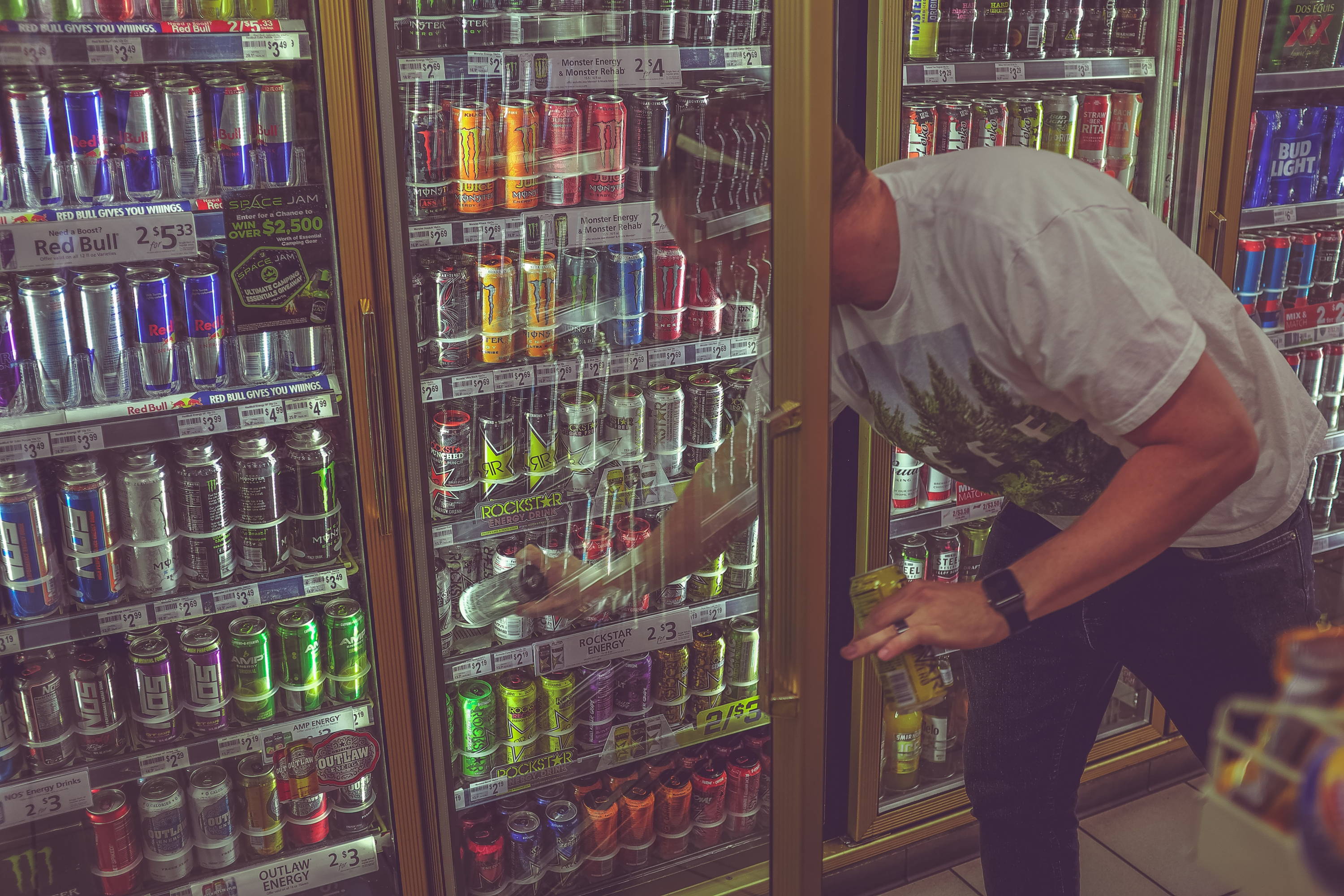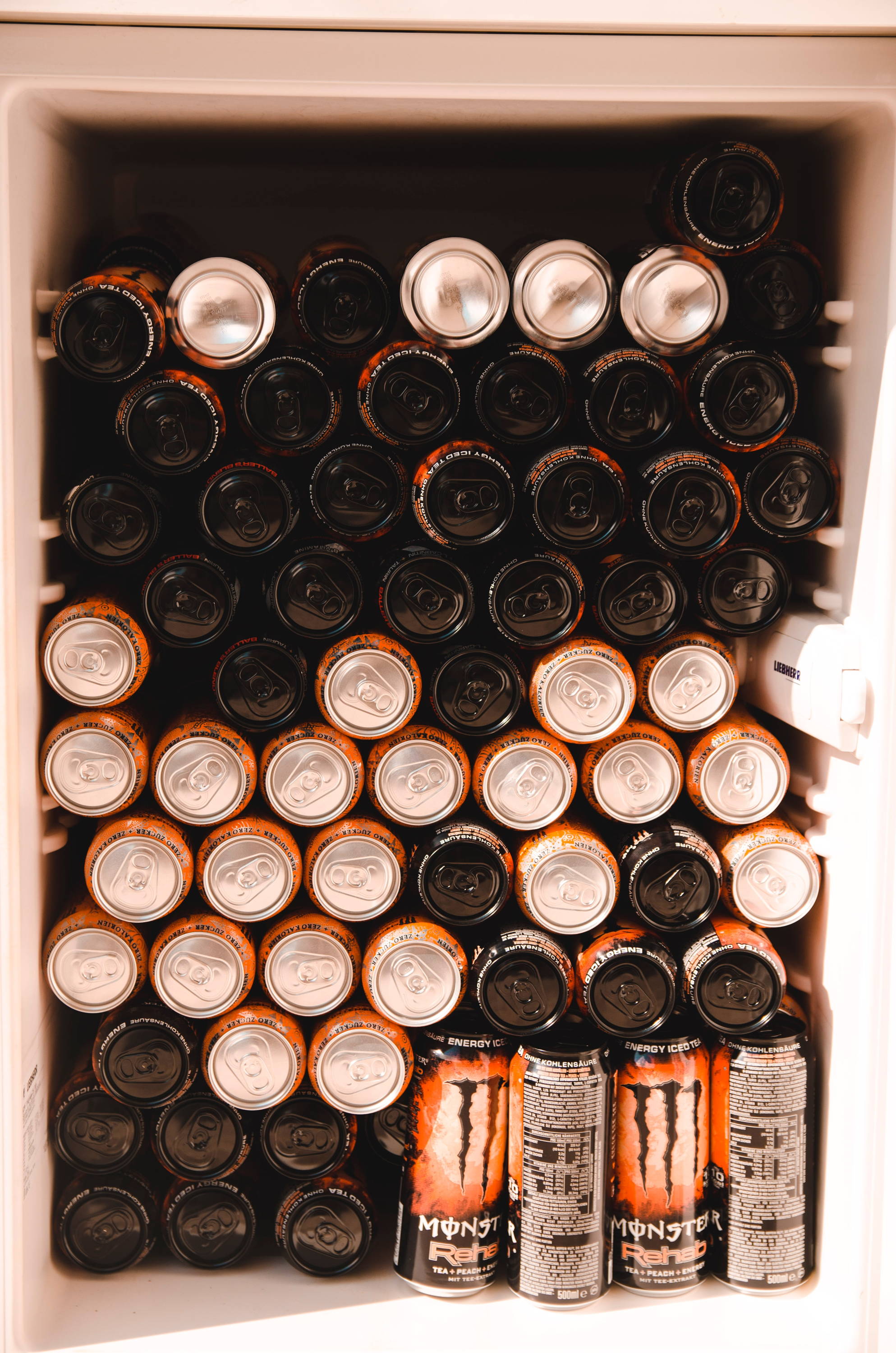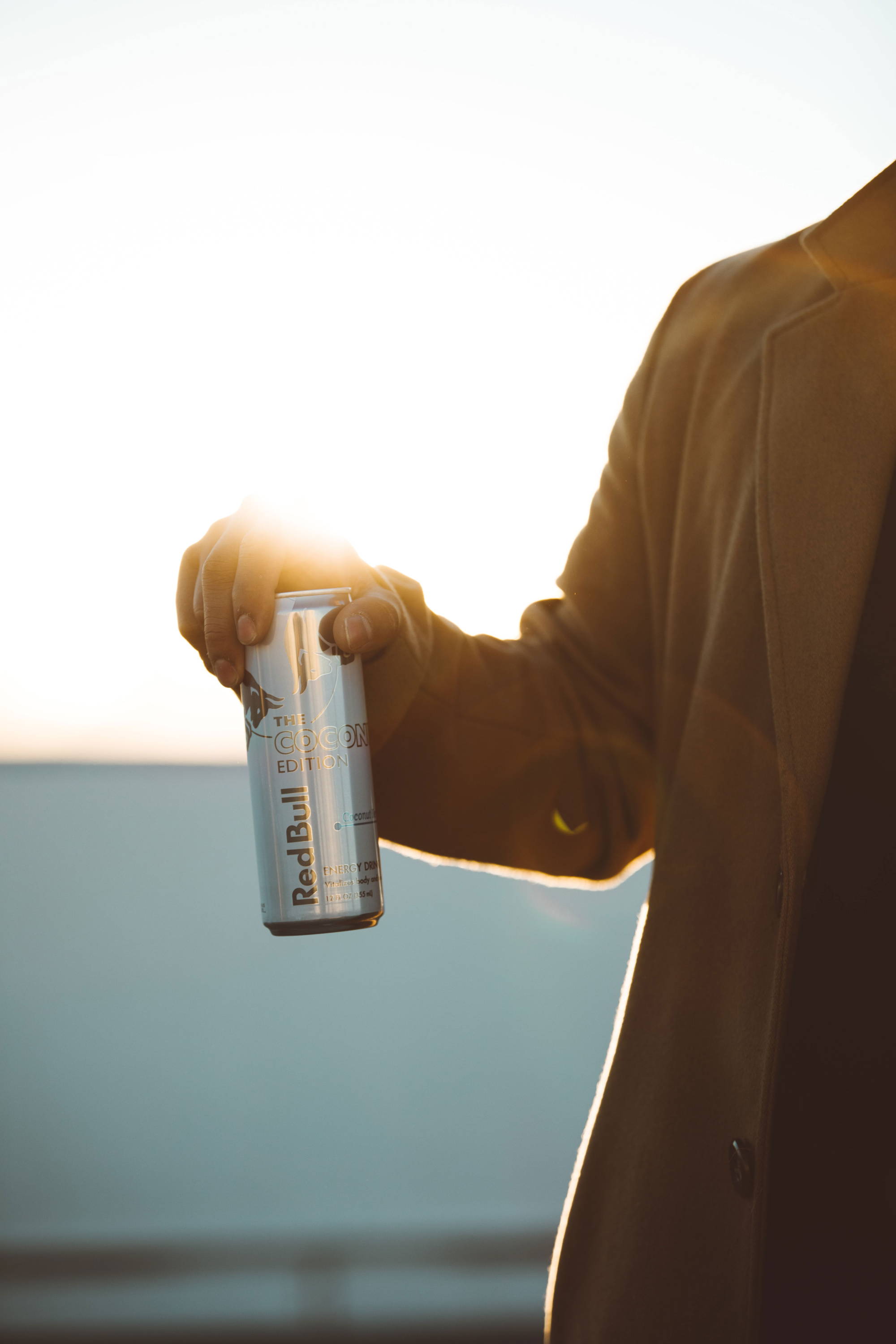
#editorial
What you didn’t know about how energy drinks impact you and the planet
31 august '22
7 minutes
Words by Bilgesu Altunkan & Rebekah Smith

Photocredits: Breston Kenya
To complete our daily list of tasks and activities, we may feel low on energy. The fix? A cold beverage that is both refreshing and energizing. For some people, waking up early or staying up late can be hard, so an energy drink is a go-to option for productivity. No matter your reason for consuming energy drinks, you should know how they can impact you and the environment.
What are energy drinks?
Energy drinks can help you feel energized after just one sip. This is because of the internal makeup of energy drinks. According to the CDC, energy drinks contain “large amounts of caffeine, added sugars, other additives, and legal stimulants such as guarana, taurine, and L-carnitine.”
Many of these drinks come in cans ranging from 250 mL with 80g caffeine to 900mL with around 250g caffeine. Monster Energy currently makes the largest energy drink sold in stores: 900mL cans with up to 325g caffeine.

Photocredits: Tyler Nix
How can energy drinks affect your body?
The stimulants in energy drinks benefit people by increasing alertness, attention, and energy. They also increase blood pressure, heart rate, and breathing. However, these compounds can contribute to a number of health issues.
The Alcohol and Drug Federation shares that, while drinking energy drinks is common among young people (particularly males), little is known about how much they can safely drink. What is known, however, are the damaging effects these drinks can have on youth. Headaches, insomnia, tiredness, irritability, stomach aches, and hyperactivity are just some of the effects that have been linked to young people who consume energy drinks.
Another concern is nutrition and sleep, which are both particularly important during adolescence since major growth is occurring. Energy drinks have also been linked to high-risk behaviors in young people, including smoking, alcohol and other drug use, fighting, and impulsive risk-taking. Long-term issues include tooth decay, obesity, and Type 2 diabetes. Other effects may be an increased risk of an irregular heartbeat, mental health issues, and kidney damage.

Picture by Nathan Dumlao
It doesn't just stop with the effects of energy drinks on our bodies. The environmental impact of energy drinks may be bigger than you think. For example, energy drink packaging has a direct impact on the climate. Specifically, the overuse of packaging, linked with single-use products, greatly harms the environment.
Soft drinks and energy drinks alike are usually packaged in plastic bottles, glass bottles, or aluminum cans. The carbon footprint of these materials differ by country, since many countries have different recycling systems, and the number of uses a container may have.
Overall, refillable glass bottles have the lowest carbon footprint, with aluminum cans being second lowest and recycled PET third. Single-use glass bottles have the highest carbon footprint, but they are 100% recyclable and have the lowest impact when recycled properly. However, Coca-Cola alone produces 3m tonnes of plastic packaging each year for their range of soft and energy drinks. This is equivalent to 200,000 bottles a minute! In the UK, 43% of bottles are made from single-use plastic which ends up in landfills and takes 400 years to decompose.
City to Sea, the organization behind the Refill campaign, points out that plastic bottles are the most common type of single-use plastic found on our seashores. While energy drink companies tout their bottles’ recyclability, many of them are ultimately not recycled. This is due to a host of factors, including a lack of local access to adequate recycling infrastructures. While taxes, such as bottle return schemes, can be a good way to funnel profits from sales to build the infrastructure needed to meet local recycling demands, this does not account for the loss of resources along the way.
These are only some of the effects that the energy drink industry has on our environment. Next time you consider buying an energy drink, also consider these risk factors. You can also take the step to educate others by informing people of companies’ processes, materials used in their packaging, and the ingredients contained in energy drinks.
























